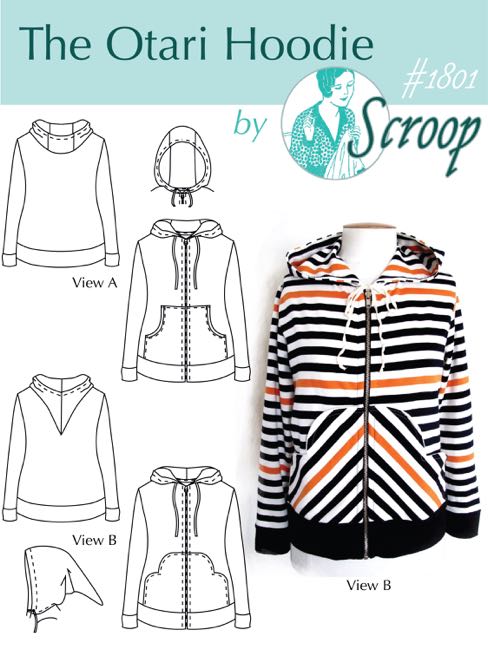As a sewing teacher I feel that choosing the right fabric can make or break a project, so it makes sense to start the Otari Hoodie Sew-Along at the very beginning: choosing fabric.
The goal with any project is to think about what characteristics you want the finished garment to have (drape, warmth, structure, weight), and then choose fabrics that when combined, will have all those characteristics. A garment that depends on drape needs an outer and lining that are equally drapey. A structured garment needs stiffer fabric, or the addition of interfacing or flat lining to a softer, less structured fabric. Etc. Etc.
With the Otari Hoodie, you want enough stretch in all your fabrics that the hoodie moves with you. The main body can have a bit less stretch, but it’s important that the cuff and hem band have lots. The cuff, pocket binding, and hem band also need good recovery, so that the shape of the hoodie stays crisp over many wears.
You also want to make sure that the combination of fabrics at any given point isn’t too thick. If you’re using a heavier body fabric, it’s important to use a very light lining fabric, and a lighter pocket binding fabric, so that the hoodie isn’t too bulky where the pocket joins the zip.
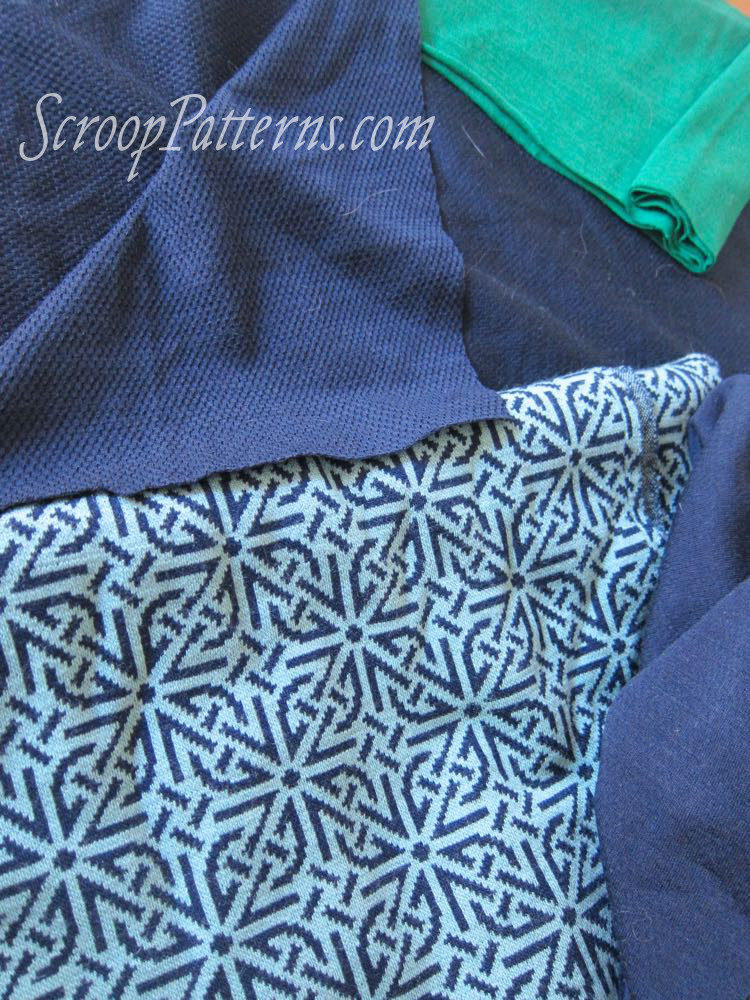
Recommended Fabrics:
Body: Midweight knit fabrics such as: midweight cotton sweatshirting, waffle knits, heavier merino knits, etc. with 20%-40% stretch across the width.
Cuff, Pocket Binding & Hem Band: Midweight jersey or ribbed knit with added spandex for good recovery and 30-40% stretch across the width.
Pocket & Hood linings: Lightweight knit fabric with 20%-40% stretch across the width. View B pocket lining fabric should have added spandex for good recovery – this is important because it helps the pocket to hold its shape with wear and use.
For the Sew Along I’m going to be making two hoodies:
Hoodie 1: View A (possibly with View B pockets)
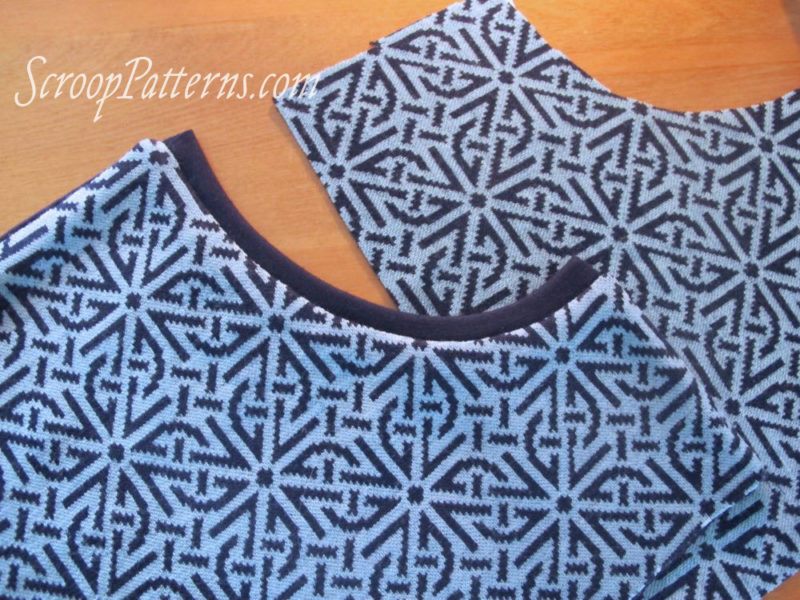
I’ll be making this one in a fancy teal & navy jacquard woven merino double-knit, with navy merino bindings.
The double-knit body fabric is 100% merino and has 30% stretch across the width, and just under 10% stretch along the length.
The contrast binding fabric is 96% merino, 4% elastane (spandex) and has 40% stretch across the width, and 10% stretch along the length.
The contrast fabric is quite thin, to balance the thick, fluffy double-knit, but has excellent recovery, so is strong enough to hold its shape as bindings.
Hoodie 2: View B with View A Pockets
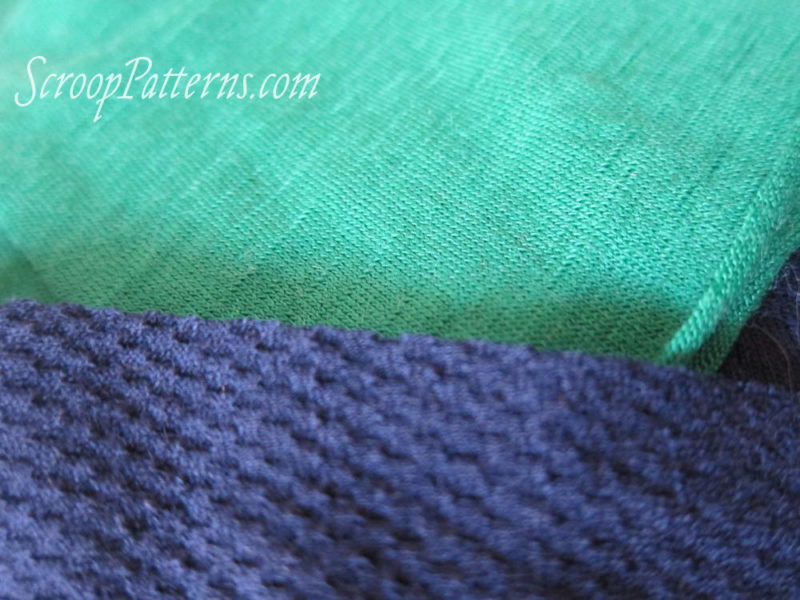
I’ll be making this one in navy blue merino waffle knit, with kelly green merino knit contrast.
The waffle knit body fabric is 100% merino and has 30% stretch across the width, and just under 10% stretch along the length. It is lighter weight than the merino double-knit.
The contrast binding fabric is 96% merino, 4% elastane (spandex) and has 40% stretch across the width, and 10% stretch along the length. It’s the same fabric as the navy blue I’m using in Hoodie 1, just a different colour.
I’ll also be using some of the navy contrast from Hoodie 1 for my hood lining, and pocket linings.
All of my fabrics were purchases at The Fabric Store New Zealand.
Sample Otari Hoodies:
I thought you might find it helpful to look at the three Otari Hoodies I made as samples, and what fabrics I chose for them as well (especially since I’ll be using the first two to demonstrate some steps in the Sew Along).

Jenni’s Otari Hoodie is made up in powder blue floral midweight 100% cotton sweatshirting, with 20% stretch across the length and width.
The cuffs & hem band are in midweight cotton-spandex ponte, with 35% stretch across the length and width, and excellent recovery.
The hood & pocket are lined in lightweight silk-viscose-spandex.
The blue sweatshirting has the absolute minimum recommended stretch, and was near the top end of a weight I’d recommend. Thus it was very important that the cuffs and hem band have excellent stretch and recovery, and that the linings were as lightweight as possible.
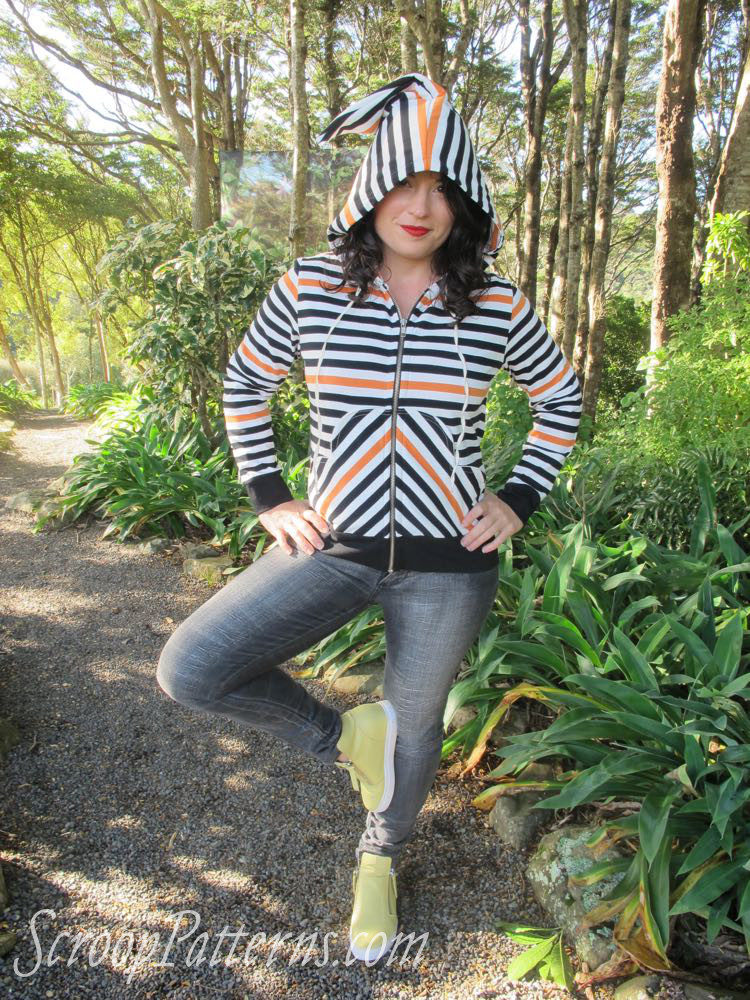
Priscilla’s Otari Hoodie is made up in black, ivory & orange striped midweight 100% cotton ribbed knit, with 25% stretch across the width, and 20% stretch along the length.
The cuffs & hem band are in midweight cotton-spandex with 35% stretch across the length and width, and excellent recovery.
The hood is in the same fabric as the body, and the pockets are lined in ivory midweight cotton-spandex with 35% stretch across the length and width.
I actually found this fabric at an op-shop – 10m for $8! Hard to pass up. I started using it just as toile fabric to test Otari techniques, and liked it so much I managed to make three real Otaris out of the remaining length – one for me, one for Priscilla, and one that went to another friend.
The striped cotton is a slightly tricky fabric in that it has very little recovery, so, like the sweatshirting above, needed pocket and binding fabrics that were going to add as much support as possible. The black banding fabric is actually just barely above T-shirt weight, but it has enough spandex to give it a lot of strength.
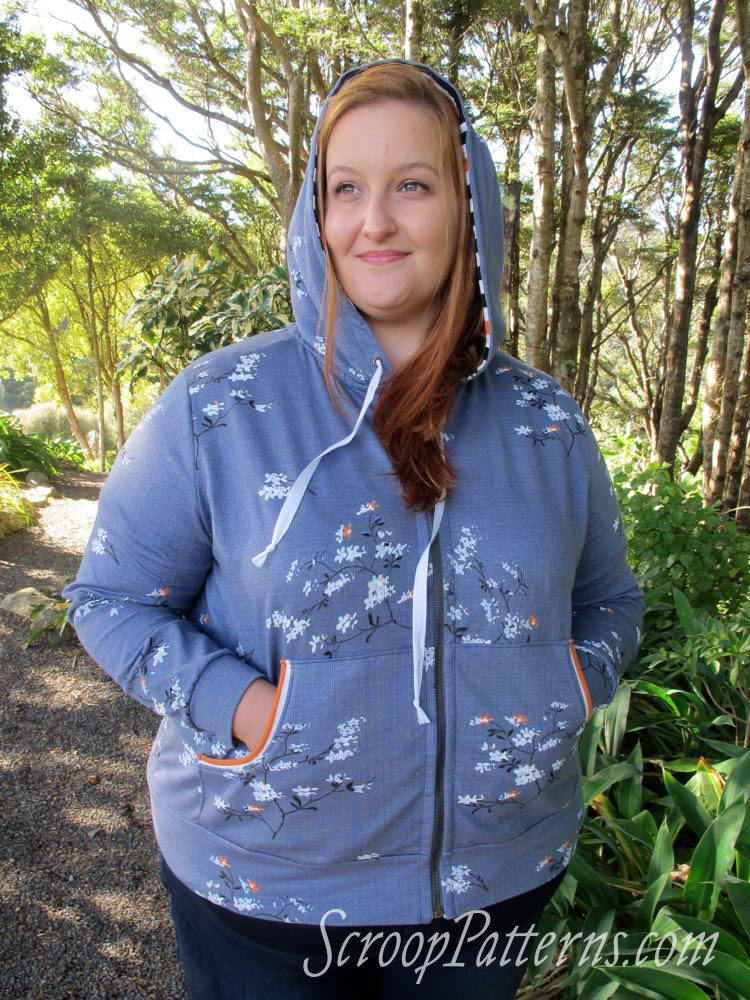
Danielle’s Otari Hoodie is made up in denim blue floral lightweight cotton-spandex textured sweatshirting, with 30% stretch across the width and 25% stretch along the length.
The pockets, cuff & hem bands of the same fabric. The hood and pocket are lined and bound with 100% cotton ribbed knit.
The added spandex in this fabric made it very easy to work with: its robust enough to use as the cuff and hem band fabric, and to support itself as pockets, so I could use fabric with little recovery as the pocket binding. I could have made the whole Hoodie out of the blue fabric – but a contrast is more fun!
Can’t wait to see what fabrics you pick for your Hoodies!
In the next Sew Along post:
Pattern alterations and cutting out!


